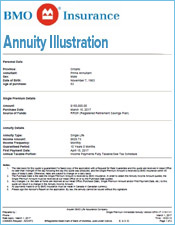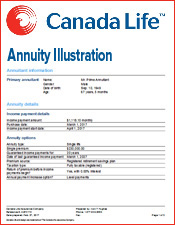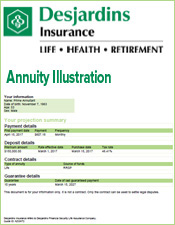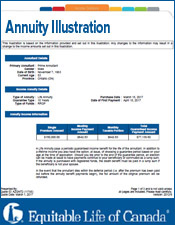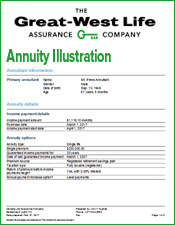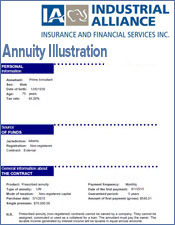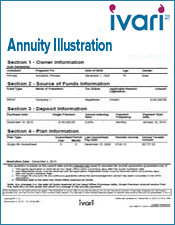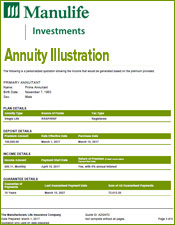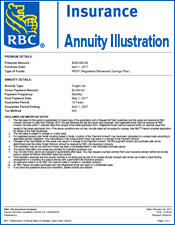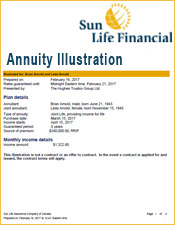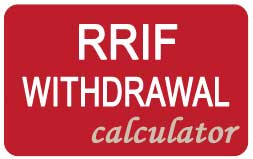What Is A Guaranteed Investment Certificate (GIC)?

GIC: A Guaranteed Investment Certificate
A Guaranteed Investment Certificate (GIC) is one of many investment vehicles available to Canadians. It is considered a safe investment as there is little risk of loss of your initial capital. Your chosen bank, trust company, or credit union guarantees your principal when you buy the GIC.

GIC Are One Of The Lowest Risk Investments Available
Banks and other financial institutions in Canada seldom fail, but the federal government recognizes it as a possibility. As a result, they established a crown corporation, the Canada Deposit Insurance Corporation, to protect all eligible deposits at member financial institutions. Deposits are protected up to a maximum of $100,000 in seven separate categories, including investments in guaranteed investment certificates.
GICs were once very popular as they offered a great return. Back in the 1980s investors could enjoy double digit returns while avoiding a volatile stock market. It was a worry-free process with little or no hassle. A person simply walked into their financial institution to buy. This combination of investment security, ease of accessibility, and a very healthy return made them very popular. However, the equation has changed making guaranteed investment certificates less popular today.
Even though guaranteed investment certificates are still one of the lowest risk investments available and easier to buy than ever, they no longer offer high returns. Currently, nominal interest rates for a one-year GIC are hovering between 1.25 percent and 1.5 percent. However, this does not take inflation into account.
The inflation rate for February 2021 is 1.0 percent, which leaves an actual return of half a percent, or less. However, some economists predict inflation rates will increase with an average of 1.6 percent in 2021 and 1.8 percent in 2022. This suggests money locked into a guaranteed investment certificate could easily lag behind inflation by a significant amount.
Considering historic low interest rates and rising inflation, the demand for GICs continues to fall. However, some investors stagger GIC maturity dates instead of locking all their money into one long-term investment. This gives them access to part of their money if they need it or they can choose to reinvest.
As a result, GICs can still play a role within a diverse portfolio, if chosen well. Of course, investors should also compare GICs with other investment options to understand which best meets their needs.
How to Buy a Guaranteed Investment Certificate
It is very easy to buy a guaranteed investment certificate in Canada. Almost any financial institution such as a bank, trust company, or credit union offers them in-person or online. You can also buy GICs through some brokerages.
Standard GICs do not require in-depth investment knowledge and are fairly straightforward if they are held in non-registered accounts. However, things can be somewhat more complicated if they are held in registered accounts such as TFSAs, RRSPs, LIFs or RRIFs. Nonetheless, GICs in registered accounts are common and should be easily handled by most institutions.
Some banks and brokerages now offer GICs linked to the stock market too. Market-linked GICs are tied to specific performance benchmarks. This hybrid is meant to increase the attractiveness of an otherwise lacklustre investment.
Just like a traditional GIC, a market-linked GIC guarantees the principal up to the eligible coverage limits. However, investors can potentially earn a decent return that is higher than inflation. Some financial institutions offer a small interest rate to sweeten the pot even more.
Every market-linked GIC depends on a specific benchmark for a specific length of time. For instance, you might invest in a 3-year market-linked GIC tied to the S&P/TSX 60 Index. This index tracks some of Canada’s largest corporations.
If the index rises over three years, the value of your guaranteed investment certificate increases. If the index remains the same or declines, you will not earn a return unless your investment also offers a small interest rate. This makes a market-linked GIC riskier than a standard one which offers guaranteed interest payments. Basically, you’re banking on the stock market rising over time instead of relying on regular interest payments.
Market-linked GICs also limit your returns. Even if your investment skyrockets, it is unlikely you will reap all the rewards. Institutions usually determine limitations based on two methods - participation rates and maximum returns. However, each institution has their own complex calculations and some contracts even include clauses that allow the bank to modify their method after “extraordinary events”, such as market disruptions.
If the index drops, you’re still guaranteed the principal. However, you can’t pull out your money until maturity even if you know you won’t earn a return, because market-linked GICs are non-redeemable. Your purchasing power will have decreased as you’ve lost three years interest.
However, a market-linked GIC might be a good way to dabble in the stock market without risking your initial investment, providing you understand the historical performance of the underlying stocks.
How Does a Guaranteed Investment Certificate (GIC) Work?
Basically, when you buy a guaranteed investment certificate you are lending money to a financial institution for a fixed amount of time. The bank, credit union, or trust company pays you interest on your money at a fixed rate. The longer the term, the more interest you earn. However, the interest rates each financial institution offers you can vary considerably. It pays to shop around.
A guaranteed investment certificate differs from most other investments as you are paid interest at a fixed rate, even if the Bank of Canada’s prime rate increases or falls.
Most GICs lock your money in throughout the term and you usually can’t access it (non-redeemable). Some institutions offer “cashable” or “redeemable” GICs at a lower rate or they may penalize you if you cash out early. In other words, you’re trading higher gains for increased flexibility.
Once you buy a GIC, the institution pays you interest into your savings account at certain intervals. How they do this depends on the GIC you’ve chosen and the interest calculation method used by the bank.
Some roll back the interest, compound it, and pay it at maturity. This is preferable as you’re paid interest on your interest. Others do not allow interest to accumulate and pay simple interest at set intervals such as quarterly, semi-annually, or annually, until maturity.
You will also have the choice to automatically invest in another similar GIC when it matures. This is not recommended since you can’t predict what the bank will offer as an interest rate in three months, a year, two years, or five years. Instead, have the principal and interest deposited in your account. Then compare rates between institutions.
GIC Drawbacks
GICs are prized for stability, but stability comes at a cost. At best, interest rates only keep pace with inflation. However, they will never outpace it unless you decide to take on more risk through a market-linked GIC.
As mentioned, inflation has risen and Canadians are undoubtedly feeling price increases across the board due to the pandemic. Even the Bank of Canada admits that it is impossible to achieve their inflation objective during “major disruptions to the economy and financial markets”. We can all anticipate more comprehensive measures.
Consequently, taking on a GIC with an interest rate of less than 1.6 percent in 2021 makes little sense if predictions are accurate. Anything less and your money will lose purchasing power every year it is tied up in the investment.
However, that is only part of the problem. Unlike capital gains, interest on GICs is 100 percent taxable at your marginal rate. The top rate within the provinces and territories is as much as 54.0 percent. The only way around this is to hold your GIC in a registered account.
That brings up yet another problem. Investing in a GIC that offers a poor return can take up contribution space for a more lucrative investment. Besides that, unless you have more money than you know what to do with, a mediocre investment ties up money and you can’t use it elsewhere.
As an example, does it make sense to buy a GIC that earns a meager one percent (or less) when you could be paying down debt? Paying down your mortgage or high interest credit cards could save you thousands instead of only earning peanuts in your guaranteed investment certificate.
In summary, GICs do have major drawbacks. These include:
- Interest rates could rise while you are locked into a fixed GIC rate
- Money is usually locked in, which reduces liquidity
- Missed opportunity for higher returns as money is tied up in GIC
- Taxed at steep marginal rate, unless held in registered account
GIC Advantages
The main benefit of a GIC is predictability. It is safe and you will know exactly how much interest you will earn and when you will receive it. Your investment pays the same amount of interest even if interest rates plummet. Historically, interest rates have ranged from an all-time high of 16 percent in 1991 to a record low of 0.25 percent in 2009. If your investment is locked in you never have to worry.
Your principal investment is also protected by the CIDC up to $100,000. GICs are easy to buy and offer a simple way to save. When a GIC reaches maturity, the money can be reinvested or moved elsewhere. This can be especially beneficial for seniors that do not want to wait for the stock market to cycle upwards.
GICs can also provide solid security for high-risk investors. Since these investments are locked up, it’s difficult for them to empty the coffers. They are also a proven method used to save up for a down payment as the future homeowners can’t dip into their investment.
In summary, GICs do have advantages. These include:
- Safe, predictable return
- Guaranteed interest rate
- Protected by CDIC insurance
- Can’t dip into savings
GIC Glossary
Financial institutions use many complex terms when they describe guaranteed investment certificates. Here are some clear explanations to help you make fully-informed decisions.
Guaranteed Investment Certificate (GIC)
A Canadian investment option with a guaranteed interest rate over a fixed period. Also known as a term deposit.
Term Lengthm
The agreed time length of your loan to a financial institution. Typical lengths include under a year for short-term GICs and 1, 2, 3, 4, 5, and sometimes 7 and 10 years for long-term GICs.
Principal
The amount you initially agree to loan the financial institution as an investment.
Maturity
The end of the term length when the financial institution repays your initial investment and any unpaid interest.
Redeemable/Cashable
GICs that can be cashed out, with or without a penalty, are redeemable.
Non-Redeemable/Non-Cashable
Locked in GICs are non-redeemable and you cannot withdraw your money.
Simple Interest
Interest paid from your GIC at regular intervals into your savings accounts.
Compound Interest
Interest is calculated at a determined time (usually annually) and added to your GIC principal. The next interest calculation is based on the higher amount. This continues until maturity.
Summary
In conclusion, GICs are a very conservative investment choice. Even if they sound attractive, they might not be the best choice for you. GICs aren’t the only safe savings vehicles available to investors today. A balanced portfolio can be achieved through countless means and there are many more players and products in the financial scene too.
The big banks are constantly challenged by innovative offerings from credit unions, trust companies, branchless institutions, and brokerages. Many can easily rival or surpass a GIC interest rate and offer far more flexibility.
If you are interested in exploring investment options that minimize risk and optimize reward, Hughes Trustco Group Ltd. can help. We are an innovative financial products company that offers a broad range of wealth management services and specialized products, including guaranteed investment certificates. Our offerings can often outpace GICs, offer greater tax advantages and more flexibility, and better suit your risk tolerance level and lifestyle.
What to do now?
- We supply you with the best GIC interest rates and other eligible investments in Canada as our brokers represent all the best financial institutions in Canada. For personal assistance on your GIC please use our GIC Form.




